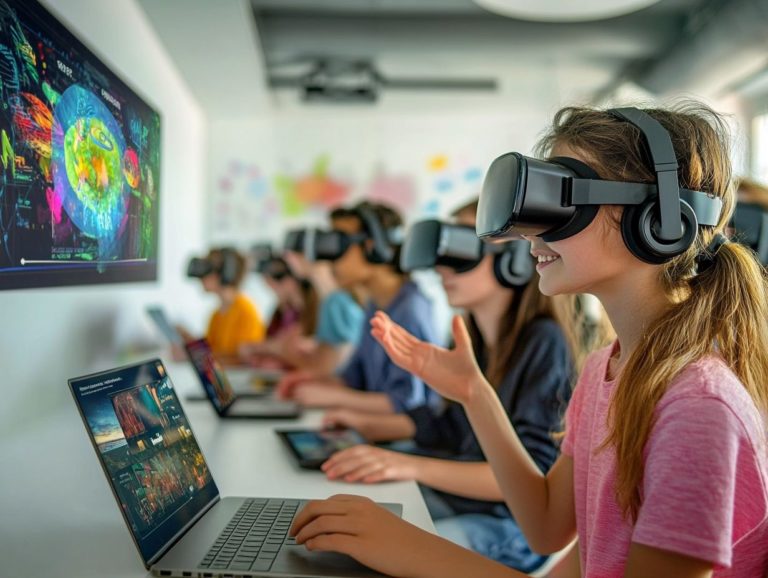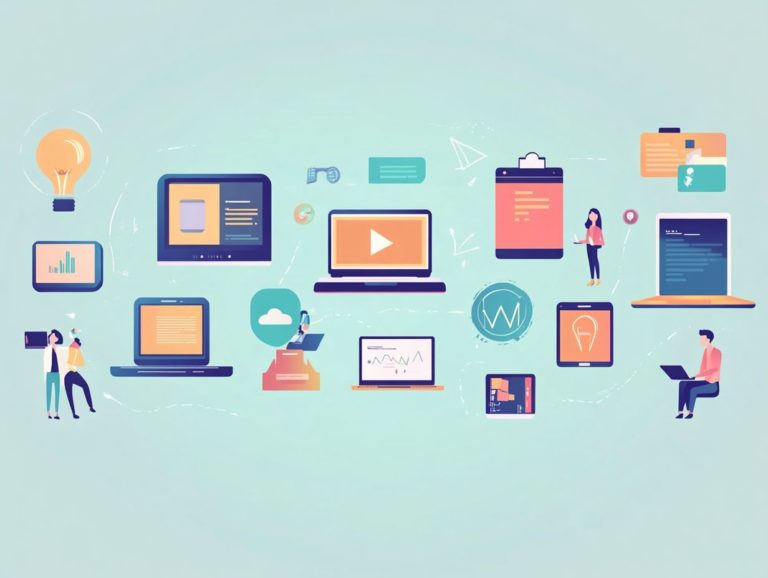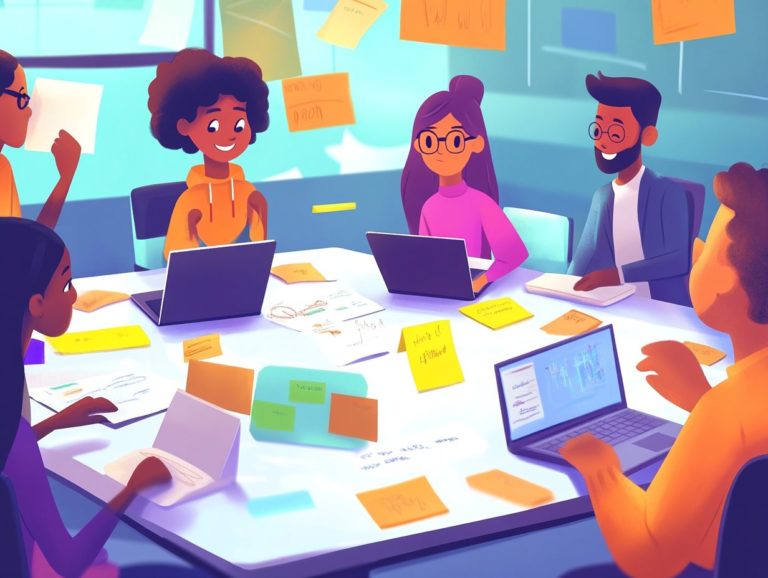How to Foster Collaboration in E-Learning
In today s digital landscape, e-learning has revolutionized how education occurs, yet the significance of collaboration remains a fundamental pillar of effective learning.
This article delves into the advantages that collaborative learning offers for student success while addressing the challenges that may impede these efforts.
It also outlines practical strategies and tools designed to promote collaboration, cultivate a supportive environment, and assess the impact of teamwork on learning outcomes.
Are you ready to discover the magic of collaboration? Explore with us as we reveal how it can enhance the e-learning experience!
Contents
- Key Takeaways:
- The Importance of Collaboration in E-Learning
- Barriers to Collaboration in E-Learning
- Strategies for Fostering Collaboration
- Promoting a Collaborative Culture
- Measuring the Success of Collaboration
- Frequently Asked Questions
- 1. What is collaboration in e-learning?
- 2. How can I foster collaboration in e-learning?
- 3. Why is collaboration important in e-learning?
- 4. How can I motivate learners to collaborate in e-learning?
- 5. What are some challenges of fostering collaboration in e-learning?
- 6. How can I assess collaboration in e-learning?
Key Takeaways:
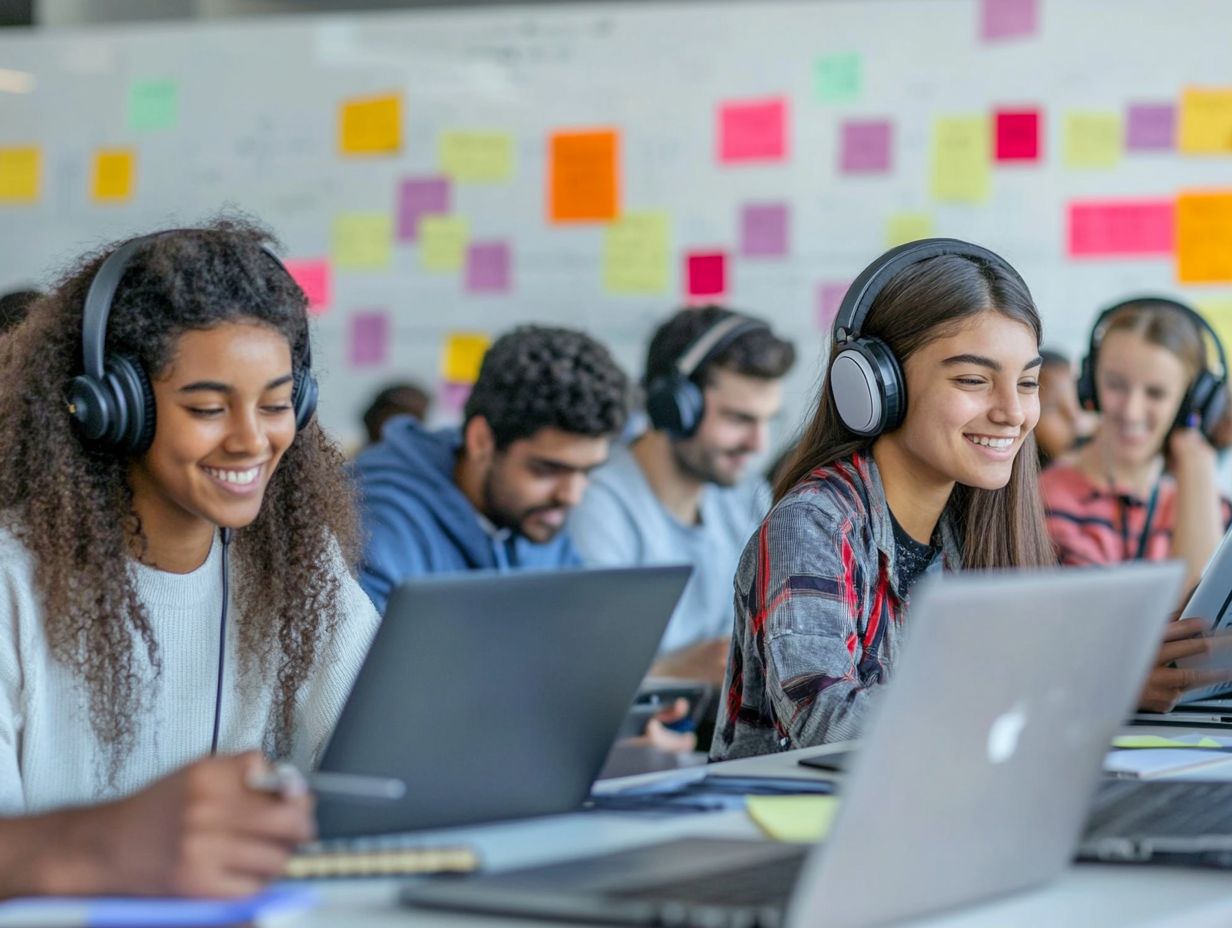
- Collaboration is crucial in e-learning and brings numerous benefits, including improved critical thinking skills and increased student engagement.
- Barriers to collaboration can include technical challenges and lack of communication, but they can be overcome with effective strategies and tools.
- To foster collaboration in e-learning, focus on creating a supportive environment, utilizing effective techniques and tools, and measuring success through evaluating learning outcomes.
The Importance of Collaboration in E-Learning
Collaboration in e-learning is essential, as it nurtures meaningful peer interactions and cultivates vibrant learning communities. To further enhance student engagement and knowledge exchange, consider exploring how to foster creativity in e-learning environments.
Embracing collaborative learning on virtual platforms like the QuadC platform, which facilitates group interactions and resource sharing, offers not only enhanced thinking skills but also fosters effective communication and teamwork skills among students.
This collaborative approach transforms traditional learning experiences into inclusive and dynamic environments, allowing learners to thrive and paving the way for a transformative educational experience.
Benefits of Collaborative Learning
Collaborative learning presents a wealth of advantages that can elevate your educational experience, helping you develop crucial skills like problem-solving and effective communication.
When you participate in group discussions and projects, you gain exposure to a variety of perspectives that stimulate critical thinking and deepen your grasp of complex topics. For example, working on a science project as a team allows each person to approach challenges from different angles, leading to richer exploration and more profound insights into the subject matter.
This method boosts your engagement and helps you dive deeper into learning while honing your teamwork skills.
Through these peer interactions, you clarify your ideas and assist others in understanding difficult concepts, fostering a collaborative spirit that transcends the confines of the classroom.
Impacts on Student Success
The impact of collaborative learning on your success as a student is significant, enhancing your engagement strategies and providing essential academic support through peer feedback.
Research shows that when you work with others, you sharpen your critical thinking skills and deepen your understanding of complex concepts. For instance, a case study revealed that students who participated in group projects achieved higher grades than those relying solely on individual assignments.
Classroom simulations demonstrate that collaborative environments spark creativity and invite diverse perspectives, resulting in richer discussions and innovative solutions.
In this ecosystem, instructors play a crucial role by crafting opportunities for interaction and guiding you in effective teamwork strategies. This approach aligns with measurable learning objectives and contributes to your overall academic success.
Barriers to Collaboration in E-Learning

Despite the numerous advantages of e-learning, barriers can hinder your collaboration. Technical challenges and inadequate communication protocols often stand in the way, affecting student engagement and the emotional support necessary for a fruitful learning experience.
Challenges and Obstacles
The challenges you face in encouraging teamwork within online environments are quite multifaceted. They often arise from inadequate student interaction and insufficient feedback mechanisms.
This lack of engagement can become even more pronounced due to varying levels of digital literacy among your peers. Some may struggle with navigating collaborative tools effectively, leading to feelings of frustration and isolation. A noticeable absence of motivation can stifle group dynamics, impacting not just individual contributions but also the overall spirit of collaboration.
To tackle these issues, consider implementing tailored training sessions designed to bridge the digital divide, equipping everyone with the foundational skills they need. Establishing a culture of regular feedback and open communication can energize learners and encourage more active participation, ultimately enhancing their collaborative experiences in the digital landscape.
Strategies for Fostering Collaboration
To cultivate collaboration in e-learning, it’s essential to implement effective strategies that harness communication tools and learning management systems. Understanding the importance of community in e-learning will elevate student engagement and interaction to new heights.
Effective Techniques and Tools
Utilizing effective techniques and tools is essential for promoting collaborative learning, especially in virtual classrooms designed for online education.
By incorporating methods like problem-based learning (PBL), where students learn by solving real-life problems together, you can engage with real-world challenges in small groups. This cultivates a sense of teamwork and shared responsibility among your peers. Guided design enhances this experience by leading you through structured tasks while encouraging critical thinking.
Collaboration tools like Slack, Microsoft Teams, and Google Workspace transform engagement strategies. They enable you to share documents, participate in discussions, and offer instant feedback. This dynamic interaction enriches your learning experience and fosters a supportive community where you and your peers can develop valuable communication skills.
Promoting a Collaborative Culture
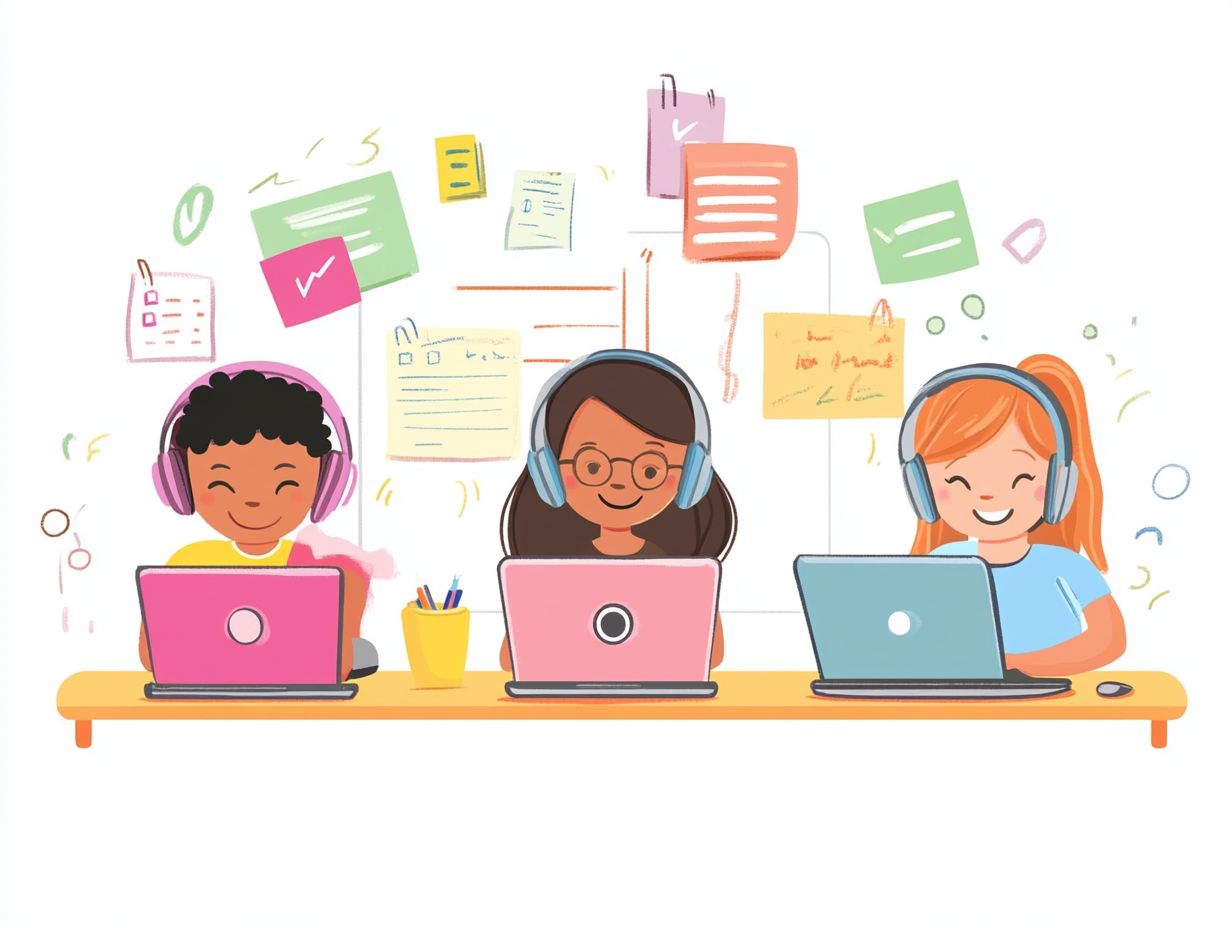
Creating a collaborative culture in e-learning is vital for success! By doing so, you create a space where students feel valued and engaged, paving the way for enhanced learning outcomes.
Creating a Supportive Environment
Creating a supportive environment is essential for effective collaboration in online learning. This ensures you receive the emotional support necessary for your success.
In such an atmosphere, open communication becomes the cornerstone. It allows you to express your thoughts and concerns freely, without fear of judgment. This fosters a sense of belonging and encourages peer interaction, cultivating relationships that enhance collaborative efforts.
Instructors play a pivotal role as facilitators. They model positive communication, provide constructive feedback, and create opportunities for you to engage with your peers. By establishing trust and demonstrating empathy, educators can significantly contribute to a culture where you feel valued and motivated to participate, ultimately leading to a richer online learning experience.
Measuring the Success of Collaboration
Measuring the success of collaboration in e-learning is essential for evaluating its impact on learning outcomes. This process highlights areas of strength and fosters continuous improvement through constructive feedback.
By focusing on these metrics, you can ensure that collaborative efforts are truly enhancing the learning experience.
Evaluating Learning Outcomes
Evaluating learning outcomes in collaborative settings is crucial. It helps you understand how engagement strategies affect your performance and satisfaction.
You can assess these outcomes using various techniques. Options include peer assessments, self-reflections, and group project evaluations.
These methods highlight individual contributions and show how group dynamics influence learning. Timely and constructive feedback is key to improving your collaborative skills.
In the fast-paced world of e-learning environments, continuous assessment is increasingly vital. It ensures that your teaching methods and comprehension align with evolving needs.
Frequently Asked Questions
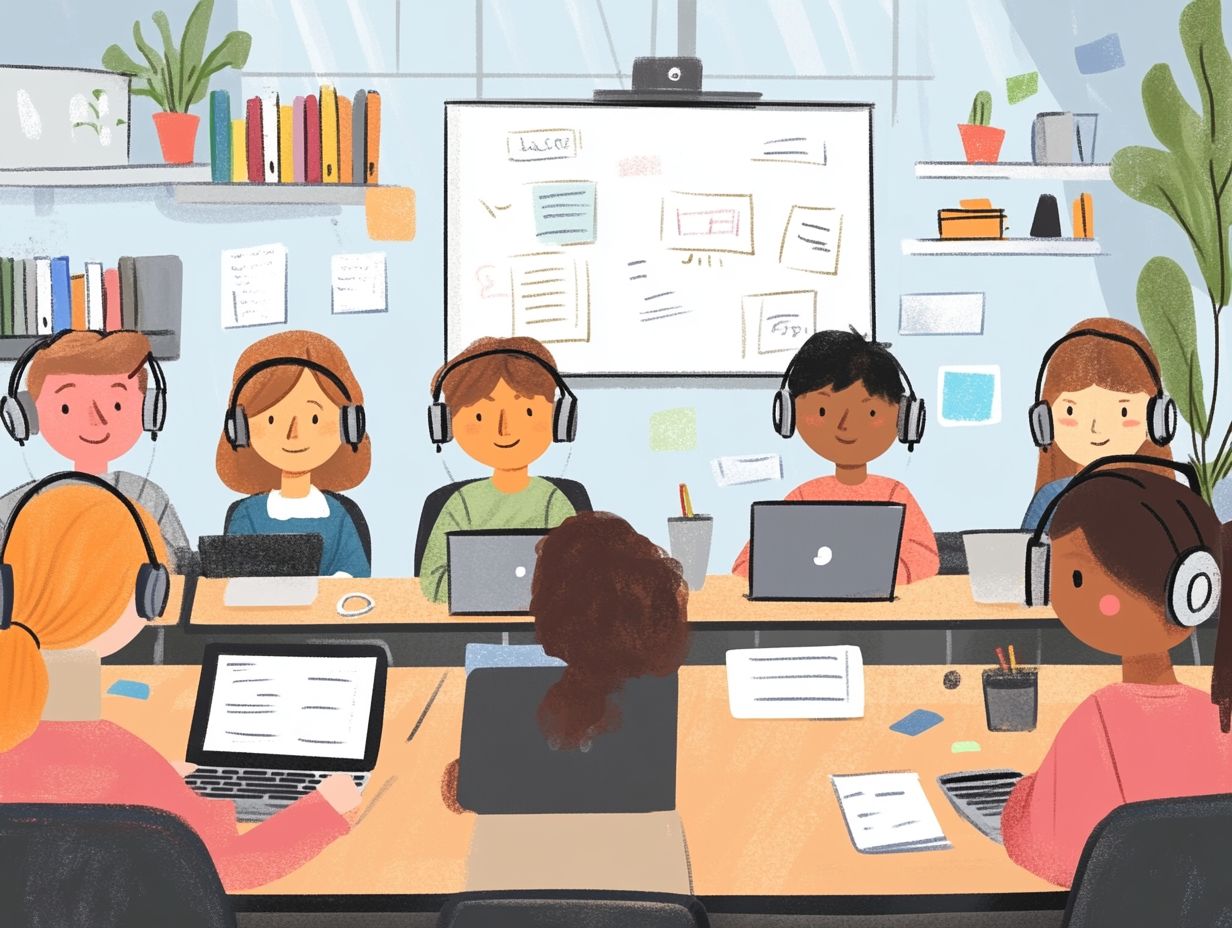
1. What is collaboration in e-learning?
Collaboration in e-learning refers to working together with others to achieve a common goal using technology. It involves sharing ideas, resources, and knowledge in a virtual environment.
2. How can I foster collaboration in e-learning?
To foster collaboration, use interactive tools such as discussion forums, group projects, and virtual whiteboards. For more insights, check out this guide on how to foster team collaboration in training. Encourage communication and teamwork through online group activities and assignments.
3. Why is collaboration important in e-learning?
Working together in e-learning makes learning exciting and keeps everyone engaged. It promotes a deeper understanding of the subject matter and prepares learners for real-world collaborative environments.
4. How can I motivate learners to collaborate in e-learning?
Create a positive and inclusive learning environment. Set clear learning objectives and provide timely feedback. Offering opportunities for peer mentoring also encourages collaboration.
5. What are some challenges of fostering collaboration in e-learning?
Challenges include technical difficulties, time zone differences, and potential conflicts among learners. Ensuring equal participation can also be difficult in a virtual setting.
6. How can I assess collaboration in e-learning?
Collaboration can be assessed through group projects, peer evaluations, and discussion forum participation. Use rubrics and surveys to gather feedback on the effectiveness of collaborative activities.
Start fostering collaboration today! Explore different tools and techniques to enhance your learning experience.


